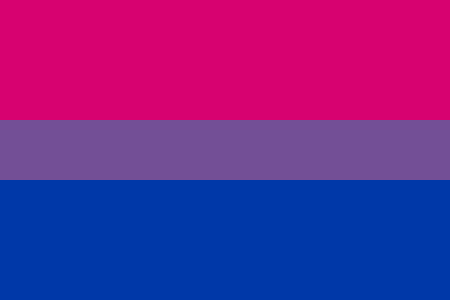Scientific U-Turn: Male Bisexuality Is Real

A famous study conducted in 2005 proclaimed that male bisexuality is an illusion. Despite study participants claiming to be attracted to members of both sexes, when the subjects were hooked up to genital sensors and shown same-sex male and same-sex female pornography, individuals were only seriously aroused by one type or the other. The results were taken as evidence that, in terms of arousal, men are either gay, straight or lying.
"I'm not denying that bisexual behavior exists," Michael Bailey, a psychologist at Northwestern University and senior author of the 2005 study, told the press at the time, "but I am saying that in men there's no hint that true bisexual arousal exists."
Now, he and his colleagues are saying quite the opposite. They've conducted a new study, published online in the journal Biological Psychology, called "Sexual arousal patterns of bisexual men revisited." Upon this visit, they found more than just a hint of male bisexuality.
Much more stringent criteria were used to recruit bisexual male study participants this time around. "Last time, they got their guys from an ad in an urban newspaper read by a hipster crowd," Allen Rosenthal, a Ph.D. candidate in psychology and the lead author of the new study, told Life's Little Mysteries, a sister site to LiveScience. This time, instead of relying on self-reporting of sexual orientation, men only qualified as bisexuals if they had had sex with at least two members of each sex and had carried on a romantic relationship of at least three months with a member of each sex. [Why Do We Have Sex?]
The participants were subjected to the same genital-sensor-and-porn test as in the 2005 study. (Responses to same-sex male and same-sex female porn are used for comparison rather than same-sex male and heterosexual porn, because researchers have previously found that men of any sexual orientation can be aroused by heterosexual porn. "With using a hetero stimulus, you don't know who they're focusing on," Rosenthal said.)
The results: "Bisexual men in the present study demonstrated bisexual patterns of both subjective and genital arousal," the authors wrote. Another not-yet-published experiment, Rosenthal said, found that bisexual men are significantly more aroused by bisexual porn — porn showing sex between two men and one woman — than are straight or gay men. [What If There Were More Than Two Sexes?]
Rosenthal believes his new results will be validating to a lot of bisexual men who had heard about the earlier research and felt misrepresented or misunderstood by science.
Sign up for the Live Science daily newsletter now
Get the world’s most fascinating discoveries delivered straight to your inbox.
However, the authors believe that the new results don't completely invalidate the old. "I think that both studies are correct, but about different populations of bisexual men. I'm confident in what they did last time; the reason why we have different results is that we used different recruitment methods," Rosenthal said. Some self-reporting bisexual men aren't aroused by both of the sexes to which they claim to be attracted. Others really are. "The big open question is which results are more representative of your average bi guy on the street."
If they can generate funding for such an experiment, the Northwestern psychologists will scale up their study in order to profile bisexual males of all types.
This article was provided by Life's Little Mysteries, a sister site to LiveScience. Follow Life's Little Mysteries on Twitter @llmysteries, then join us on Facebook. Follow Natalie Wolchover on Twitter @nattyover.
Natalie Wolchover was a staff writer for Live Science from 2010 to 2012 and is currently a senior physics writer and editor for Quanta Magazine. She holds a bachelor's degree in physics from Tufts University and has studied physics at the University of California, Berkeley. Along with the staff of Quanta, Wolchover won the 2022 Pulitzer Prize for explanatory writing for her work on the building of the James Webb Space Telescope. Her work has also appeared in the The Best American Science and Nature Writing and The Best Writing on Mathematics, Nature, The New Yorker and Popular Science. She was the 2016 winner of the Evert Clark/Seth Payne Award, an annual prize for young science journalists, as well as the winner of the 2017 Science Communication Award for the American Institute of Physics.










